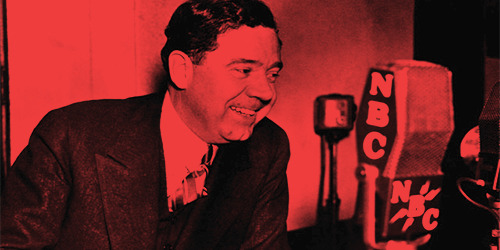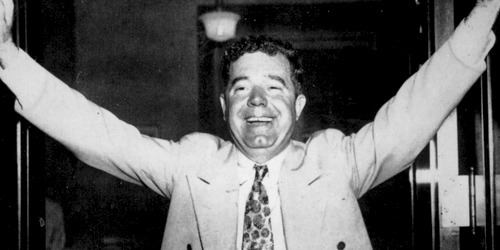#huey long
HUEY “THE KINGFISH” LONG DIED // Sept. 10th, 1935
after being shot two days earlier, Huey Long died in Baton Rogue, Louisiana; a month after he announced his plans to run for the president.
On the day of the shooting, Long was at the State Capitol building, trying to push out Judge Benjamin Henry Pavy with a re-redistricting plan (”House Bill Number One”). It was Long’s top priority sense the passing of the bill would remove Pavy from the bench. The session that would determine whether or not the bill would be passed was going on all day, even until 9 p.m. Throughout the day, Dr. Carl Weiss (Pavy’s son-in-law) was trying to get a moment alone with Long so that they could speak. But Long and his body guards brushed him off each time while passing in the hallway.
At 9:20 p.m., shortly after the house finally passed the bill that Long had wanted so much, Weiss approached the Senator for the final time. The generally accepted version of what happened in the hall of the Old Statue Capitol building is that when Weiss approached Long, he got into four feet from him and then shot him in the abdomen once with a handgun. After the shot was fired, Long’s bodyguards began firing their own guns are Weiss, shooting him a total of 62 times.
Long was rushed to the hospital and died two days later at 4:10 a.m. His last words are reported to be, “God, don’t let me die. I have so much to do.” LSU historian, T. Harry Williams has suggested that Long could have possibly survived with better medical care. but Edgar Hall (who was among those that were called to treat Long’s wound) denies that his death was a result of medical or surgical incompetence.
In a 2014 documentary about the event called 61 Bullets, directed by Louisiana Kreutz and David Modigliani, questions whether or not Dr. Carl Weiss actually murdered Huey Long. While the documentary debates Weiss’ innocence in the case, historians do not accept the theory that Long actually died as a result of accidentally being hit by one of the bullets fired by his own bodyguards. However, a historical plaque adjacent to the Old State Capitol grounds, at the site of Dr. Carl Weiss’ home reads, “alleged assassin.”
Post link
THE KINGFISH // Huey P. Long, Jr.
the 40th Governor of Louisiana (1928 - 1932) and a member of the United States Senate (1932 - 1935) was a member of the Democratic party who had announced his plans for presidency a month before he was assassinated in the Old State Capitol building in Baton Rogue, Louisiana. Long was an outspoken politician seeking to represent the interests of ordinary people. He denounced the rich and the banks and called for people to “Share the Wealth.”
His Share Our Wealth program was created in 1934 with the motto of “Every Man a King.” The program proposed a new wealth redistribution in the form of a net asset tax (a wealth tax) on corporations and individuals in order to curb poverty and homelessness that was an endemic on the nation during the Great Depression. Long also advocated federal spending on public works, schools and colleges and old age pensions to stimulate the economy.
Free higher education and vocational training, pensions for the elderly, veterans benefits, health care and a yearly salary (enough for a house, car and other ordinary conveniences) for all families that earned less than 1/3 of the national average income were things he also advocated for. Later, he proposed a debt moratorium to give struggling families extra time to pay their mortgages and various other debts without losing their property to creditors.
In 1928, the roads of Louisiana were hardly maintained (out of the 300 miles of paved roads, only 60 miles were kept up by the state). The poor state of the roads made it difficult for many of the rural citizens of Louisiana to get to school, work and hospitals. Long’s administration implemented a road-building program that employed 22,000 men. Four years later, there were 9,700 miles of newly paved and gravel roads and 111 bridges, which doubled the size of the state’s highway system. The new roads lowered the cost of doing business and saved the average driver more than $118 per year (an average of $1,400 in today’s standards) in gasoline and maintenance.
The bridges that were built during the road-building programs helped the average farmer out by allowing them to drive over the waterways that Louisiana was mostly made up of instead of taking a ferry, saving them $150 per year ($1,800 by today’s standards). The bridges also helped cut down on travel time, making a trip that usually took days only take a few hours.
He also initiated the construction of public hospitals and schools in Louisiana, tripled the size of Louisiana State University by building new department facilities and a modern football stadium, and a new medical school. He believed education was in everyone’s birthright, restructured the tax system to give the state the financial burden of education instead the poor families and parishes. He also pushed for a bill that would provide free textbooks to every student in Louisiana, which increased school enrollment instantly by 20%. His initiatives provided free busing so that all students would be able to attend school. He also established adult vocational schools and night classes; which taught 100,000 of the 230,000 illiterate adults in the state how to read.
Long created a network of public hospitals that would be accessible to the poor. He expanded the stater’s two Charity Hospitals to create the network. The expansion allowed the capacity of New Orleans’ Charity Hospital to double and reduced the death rate by 30%. He modernized and expanded the state’s hospitals and institutions by adding new treatment rooms, sterilizing equipment, abolishing the practice of chaining patients to chairs in plow stocks and provided modern therapy and dental care. Long’s administration also built institutions for mentally disabled children and epileptics. He tripled funding for public healthcare through the Board of Health, expanding the 10 free health care clinics to 31 by 1933 and provided free immunizations to 67% of the rural population.
Post link





